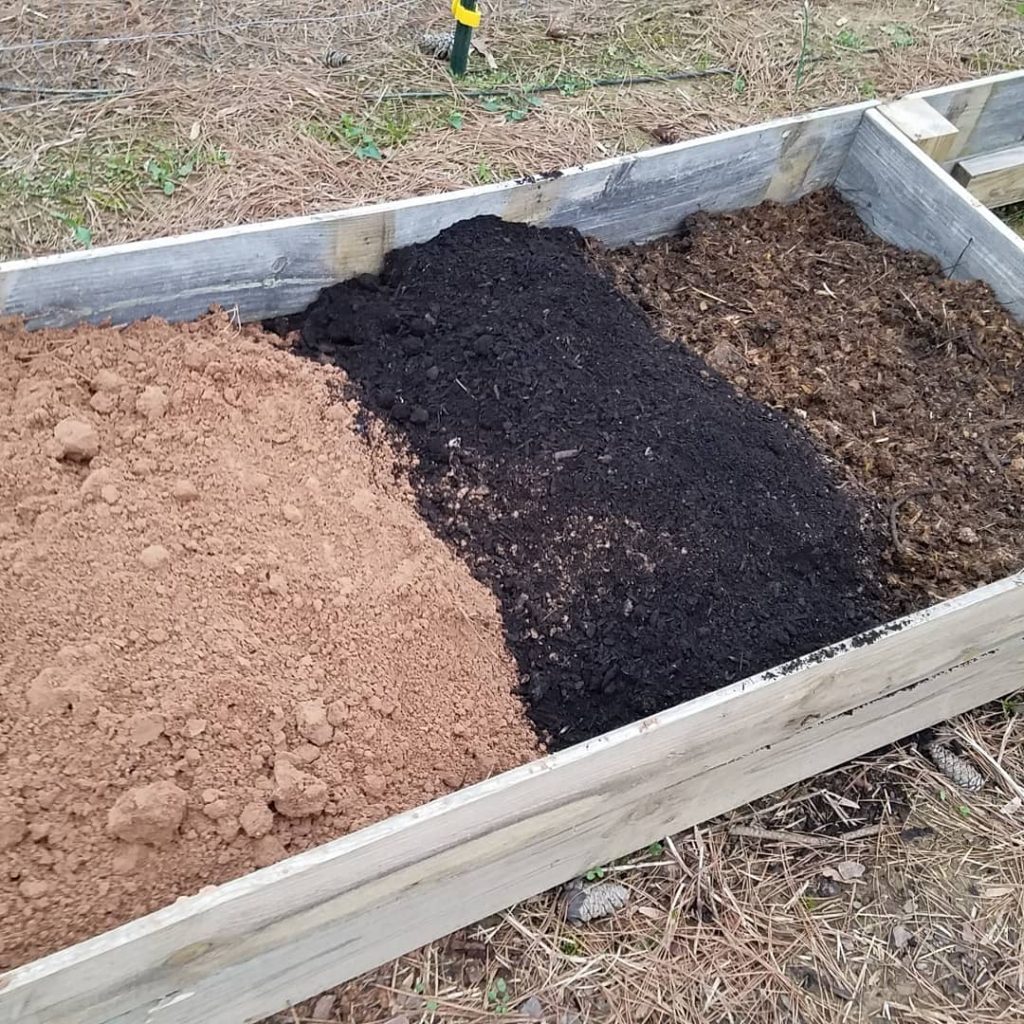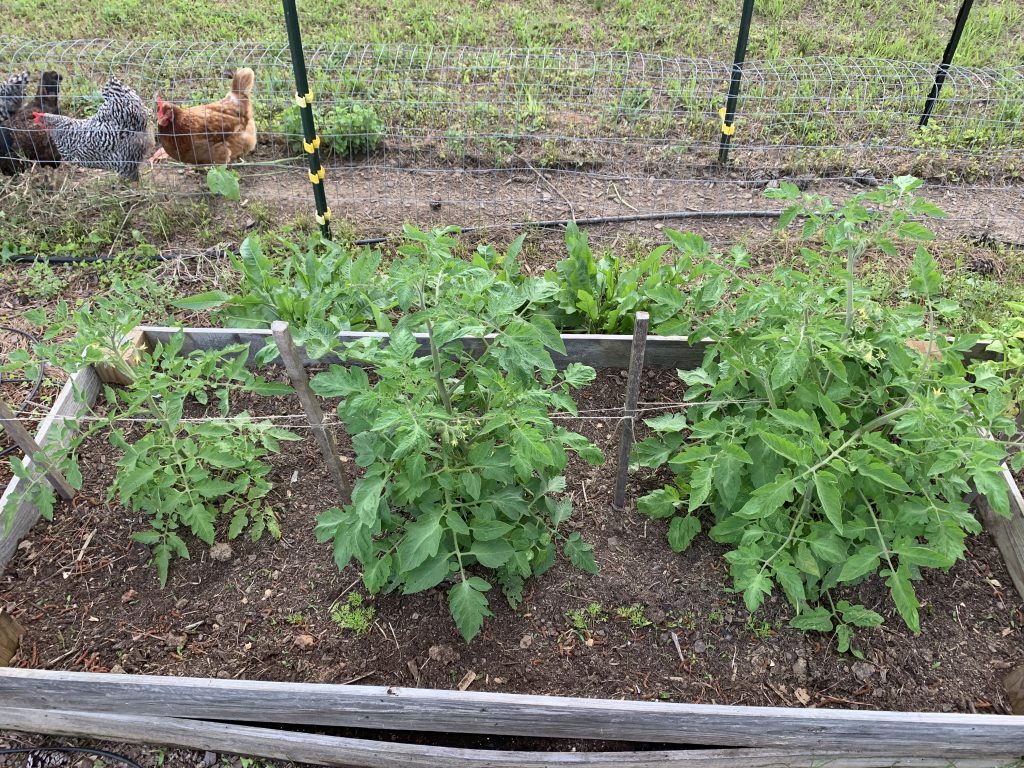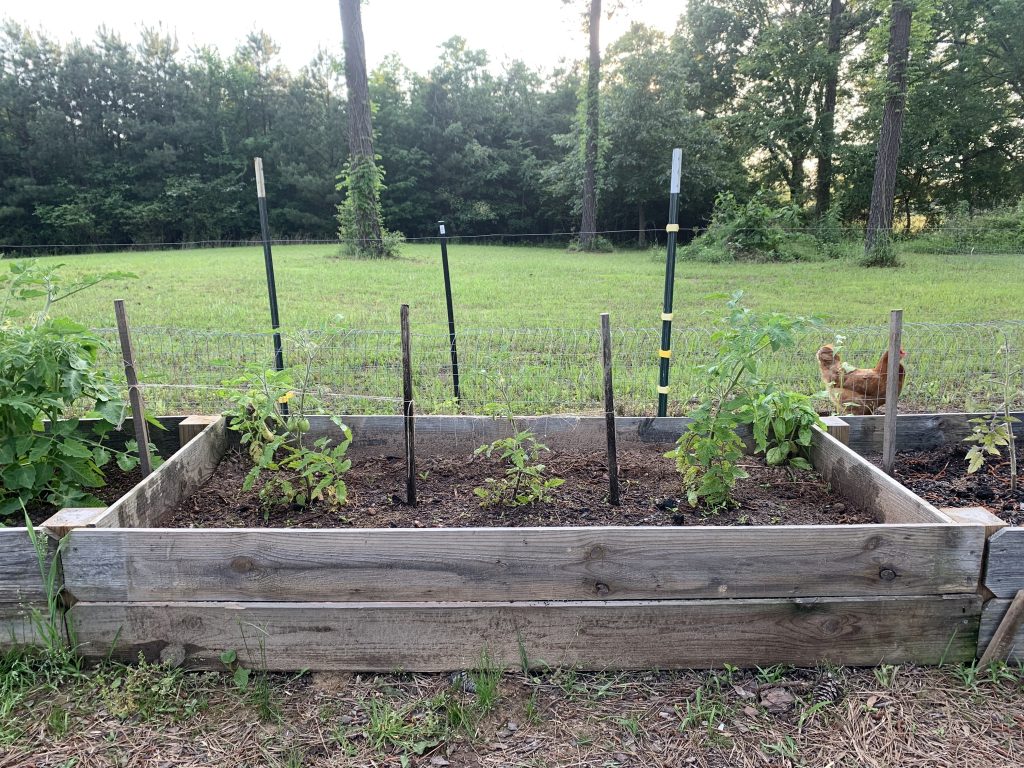I have been growing in raised beds from the very beginning of my garden journey. In the early years, I used native soil from my property to fill them.
But when I needed to find soil outside my property for three new raised beds, I decided to conduct an experiment. I tested three different raised bed soil mixes and today I’m sharing the results of my year-long test.
The Best Soil for Growing Tomatoes in Raised Beds
Growing juicy, flavorful tomatoes is a goal for many gardeners. And raised beds can provide the ideal environment for getting a bountiful tomato harvest. When it comes to soil for raised bed tomatoes using the right mix is key. This article will cover everything you need to know about choosing and preparing soil for raised bed tomatoes.
Why Choose Raised Beds for Tomatoes?
Raised garden beds provide many advantages for growing tomatoes. They allow you to control the soil mix and drainage while reducing weed and disease pressure. Here are some of the top reasons to grow tomatoes in a raised bed:
-
Improved drainage – Raised beds prevent water from pooling and allow excess moisture to drain away more readily. Tomatoes need consistently moist but not soggy soil.
-
Warmer soil – The soil in raised beds warms up more quickly in spring, giving tomatoes an earlier start on the growing season.
-
Customized soil – With raised beds, you can create the ideal soil environment by filling the bed with a quality potting mix amended with organic matter.
-
Less bending – Working in a raised bed reduces back strain since there is no need to bend over as far to tend to the plants.
-
Deter pests – Raised beds can deter pests like slugs and snails that hide in ground debris. There are fewer places for them to hide in a raised bed.
Choosing the Right Soil Mix
When preparing soil for raised bed tomatoes, using a lightweight potting mix or soilless growing medium as the base is recommended. This helps prevent the bed from becoming too heavy and allows for better drainage.
Here are some good options to use as a base:
-
High-quality potting mix or soilless planting mix
-
Coconut coir or a coir/peatmoss blend
-
Compost blended with perlite or vermiculite
Avoid using subsoil or clayey native garden soil in raised beds, as this can become compacted.
Amending the Soil Mix for Tomatoes
While a quality potting mix provides an ideal starting point, tomatoes perform best with additional organic matter worked into the soil.
Plan to amend the soil with:
-
2-3 inches of compost or well-rotted manure – This should be mixed into the top 6-12 inches of soil to provide nutrients.
-
Worm castings – Worm castings add beneficial microbes and provide a slow-release source of nitrogen. Add 1-2 cups per square foot of bed space.
-
Bone meal – Add 1-2 tablespoons per square foot. Bone meal supplies phosphorus for root growth and fruiting.
-
Granular organic tomato fertilizer – Use at planting time and per label instructions during the growing season.
-
Calcium amendments – Add crushed eggshells, gypsum, or calcified seaweed to help prevent blossom end rot.
Getting the pH Right
Tomatoes prefer a soil pH between 6.0-6.8. Test the pH of your soil mix and amend if needed.
To raise pH, add lime or wood ashes. To lower pH, amend with sulfur. Make adjustments 2-3 weeks before planting and re-test to ensure you reach the target pH range.
Preparing Raised Bed Soil Step-by-Step
Follow these steps when preparing soil for raised bed tomatoes:
-
Fill the raised bed with potting mix to within a few inches of the top.
-
Moisten the soil, then add a 2-3 inch layer of compost or manure over the surface.
-
Mix in worm castings and sprinkle on bone meal.
-
Dig the amendments into the top 6 inches of soil.
-
Take a soil sample and test the pH, adjust if needed.
-
Refill the bed with potting mix to within 2 inches of the top edge.
-
Water thoroughly until water drains from the bottom, allowing the bed to settle.
-
Top off with remaining potting mix right before planting.
-
Create planting holes, fill with compost and transplant seedlings.
Ongoing Care of Raised Bed Soil
Proper care will keep your raised bed soil healthy and productive over time:
-
Each year, top dress beds with 1-2 inches of finished compost or manure before planting.
-
Use mulch around plants to conserve moisture and prevent weeds.
-
Avoid walking directly on the bed to prevent soil compaction. Use boards or pavers for access.
-
Test soil nutrients annually and amend if needed to maintain proper pH and nutrient levels.
-
Every 2-3 years, remove and replace the top few inches of soil or redo the entire bed to “reset” the growing medium.
Ideal Tomato Varieties for Raised Beds
Bush tomatoes and determinate varieties are compact choices ideal for raised beds. Some top options include:
- Bush Beefsteak
- Bush Early Girl
- Celebrity
- Red Robin
- Patio
- Sweet 100
- Husky Cherry Red
You can also grow indeterminate tomatoes in raised beds using tall stakes or cages for support. Or plant vining varieties along one side of the bed and train vines up a trellis.
Growing tomatoes in raised beds allows for better drainage, warmer soil, and superior nutrition when you customize the soil mix. With the right amendments, balanced pH and ongoing care, raised garden beds can help you achieve your goals for a bountiful tomato harvest. Paying close attention to soil preparation is one of the keys to tomato success.

Perfect Raised Bed Soil Recipe
The second mix I tested is known as the “Perfect Soil Recipe” as recommended by Joe Lamp’l. It consisted of:
- 50% topsoil
- 30% compost
- 20% other organic matter.
Joe has many different suggestions on sources of organic matter. I used homemade compost, chicken manure, and worm castings.

Method of Testing Raised Bed Soil Mix
In these three raised beds, I planted Roma tomatoes — three per 3’x6′ bed. Each tomato plant I had grown from seed indoors and I planted all nine of them at the same time.

Planting in Mel’s Mix was a dream. It was light and fluffy and wonderful to work with. No matter how much rain we got (and we had a LOT of rain) it never got waterlogged nor had drainage problems. I had no weeds in the first month and my tomatoes started out incredibly healthy.
But the drawback of Mel’s Mix? The ingredients were the most expensive to purchase.

The bed with the “perfect soil recipe” didn’t start out as great as Mel’s Mix. But, I have to consider a few extraneous factors.
First, we had a record spring rainfall year in 2019, and the topsoil I purchased for the “perfect soil recipe” seemed to contain a lot more clay than I have seen with other topsoil mixes.
In hindsight, I realized that this particular topsoil is sourced from a river bottom. So while I’m sure it contained high amounts of nutrients, it was pretty dense. It certainly had a different color and texture compared to bagged topsoil mixes (like the one I used in the bed with the bagged soil).
Because of this (from my observations), this bed didn’t drain well and seemed to compact after the heavy rains. Initially, my tomato plants struggled and were smaller than those in Mel’s Mix.
I also had more weeds in this soil than in the Mel’s Mix, though that was probably due to the higher percentage of my homemade compost.
The bagged soil mix was extremely easy to put together and, like Mel’s Mix, was a dream to plant in. It did not compact or have drainage issues in the heavy rain. But, the tomato plants from the very beginning barely grew, something that continued to be an issue for this bed.
The tomatoes in Mel’s Mix grew vibrantly and were strong with tender leaves. Weeds did start to develop, but they weren’t too bad.

The tomatoes didn’t grow quite as well in the “perfect soil recipe,” but they did grow consistently.

The biggest shock was with the tomatoes in the bagged soil mix. These were not healthy at all. Many of the leaves were very yellow and the plants itself appeared severely stunted. I had planned to keep everything the same in all 3 beds. However, these looked so unhealthy that I started watering them with fish emulsion to try to save them because I feared I would lose them.
Never plant tomatoes without this. For large fruits and more tomatoes, follow this
FAQ
How to fill a raised bed for tomatoes?
So, after filling your raised bed with great potting soil– top it off with a 3”- 4” layer of composted steer manure on top. Mix it up a little soak it down. Add a little more of that great potting soil/ potting mix if needed and you are ready to plant!!! Tomatoes will do well in raised beds 18 inches deep.
What does Epsom salt do to tomatoes?
Epsom salt, which is magnesium sulfate, can benefit tomato plants by providing magnesium and sulfur, which are important for various aspects of plant growth and development. It can help with nutrient absorption, improve blossom set, and potentially prevent or alleviate blossom end rot.
Why put baking soda around tomato plants?
Baking soda is sometimes used around tomato plants to deter pests, reduce soil acidity, and potentially prevent fungal diseases.
What to add to soil when planting tomatoes?
Compost and composted manure are great additions to the soil for tomatoes and lots of other plants. Compost adds basic nutrients and improves soil structure. Composted manure provides nutrients all season long. Composted manure: This provides a slow release of nutrients over the growing season.
